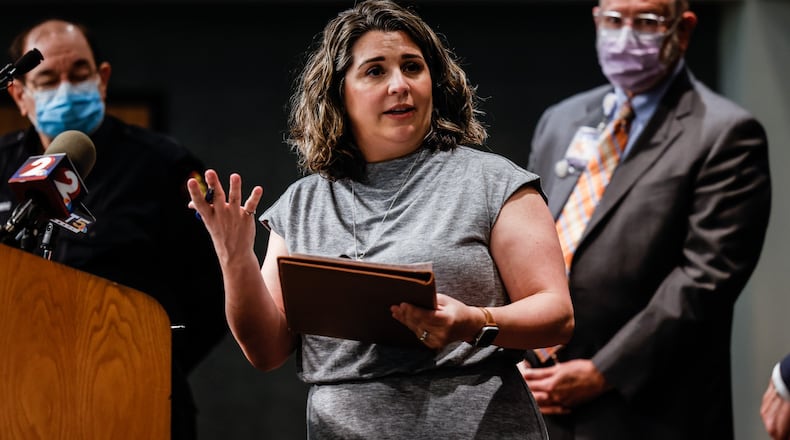For the past three weeks, area hospitalizations for COVID-19 have remained between 350 and 390 patients at any given time, Hackenbracht said. On Thursday, there were 357 patients hospitalized with coronavirus in the west central Ohio region, 73 of whom were in intensive care units, according to the Ohio Hospital Association. That region includes Shelby, Darke, Miami, Champaign, Preble, Montgomery, Clark and Greene counties.
In August and September, at least 33 people younger than 50 died from COVID-19 in the west central Ohio region, including one younger than 20 and four between 20 and 29 years old, according to Ohio Department of Health data.
Dr. Adam Mezoff, chief medical officer at Dayton Children’s, said the hospital is averaging 12 children hospitalized for COVID-19 per day, about three of them in the ICU and two of them on ventilators.
“Please, please tell everyone you know, get vaccinated. Get your COVID vaccine, get your flu vaccine, and don’t forget: wear your mask,” said David Gerstner, the Metropolitan Medical Response System coordinator for the Dayton Fire Department and immediate past president of the Greater Miami Valley EMS Council.
Deaths from COVID-19 are mostly preventable at this point, he said, as the vaccines are extremely effective.
Insufficient vaccination rates mean the Dayton region is not close to herd immunity, Hackenbracht said. In counties covered by GDAHA, 52% of the population or less have received the first dose of coronavirus vaccine, according to the Ohio Department of Health. In Preble and Darke counties, 38% and 35% of the population have received one dose respectively.
Flu season also is approaching, and some signs indicate it could be a bad flu season after a mild one last year, said Dr. Jeffrey Weinstein, chief quality officer at Kettering Health Network. People are not masking or social distancing like they were last flu season. And because there was little flu this past year, scientists have had difficulty determining which flu strains should be accounted for in this year’s vaccine, making it possibly less effective.
Weinstein urged everyone to get their flu shot. He said it is safe to get both the coronavirus shot and the flu shot at the same time without diminishing the effectiveness of either.
“We’re really coming into the flu season while we’ve got a lot of COVID going on,” he said. “And if we have a bad flu season, that will really strain the resources, even more so. In a normal year, we would have thousands of admissions to the hospital for influenza and nationally, approximately 50,000 deaths every year. So it’s not just a trivial disease.”
Hackenbracht said the region’s hospitals have worked together to scale up bed capacity as needed during the pandemic. But she said that hospitals are understaffed and the past 20 months have worn on hospital workers.
“So we are not getting to a point where we have maxed our entire capacity, but we are stretching our staff to a point that we need to ensure that, as we prepare for what’s coming with flu season, we give them some breathing room, in order to prepare for what’s coming this fall and this winter,” Hackenbracht said.
Hackenbracht painted a stark picture of what treating coronavirus patients is like for area health care workers.
“There’s a difference that we’re seeing with this patient population, and it’s impacting our frontline caregivers,” she said. “Today, staff are spending more time with patients that look like them, have a similar family or life experience or life circumstance. And today’s COVID-19 patient is just as likely as our frontline caregivers to have a son playing his first high school football game or their daughter planning for her wedding. These are the realities of the Delta variant inside the walls of our hospitals, and it is having a significant impact on the mental wellness and the health of our caregivers.”
About the Author

